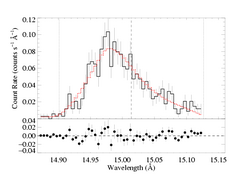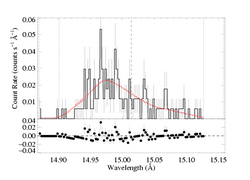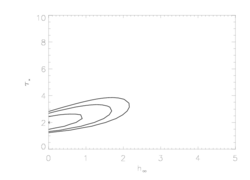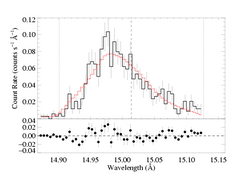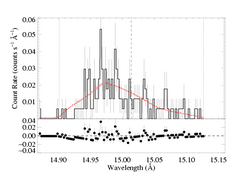Fe XVII 15.014 Angstroms
Models with isotropic porosity
Note: Both MEG and HEG are being fit simultaneously
Same continuum fit as we used for the non-porous models: n=2, best-fit norm=1.71e-3.
Note that the opacity bridging law used for these isoporosity fits is Rosseland.
This best-fit model is nearly identical to the non-porous best-fit model, as a value of hinf=0.00 is preferred even when a non-zero porosity length is allowed.
Here are the 68%, 90%, and 95% joint confidence limits on hinf and taustar. The asterisk represents the best-fit model, shown as the red histograms on the above two plots.
And here are the joint constraints on taustar and uo:
Here is the best-fit isoporous model with taustar=8 fixed. This represents the value implied by the literature mass-loss rate. It can be seen in the first of the two confidence limit contour plots above that this value of taustar lies outside of the 95% confidence range.
Note that the value of the fit statistic, C=295.74, is ~15 higher than the best-fit value, which implies that the best-fit model (with taustar free) is preferred at >99.9% confidence. The porous model with high optical depth leads to a profile with a bulge on the far blue wing and also one near line center. However, this model with taustar=8 and non-zero hinf cannot be rejected outright as a bad fit. It does, however, require a terminal porosity length of at least 2.51 (even at the 90% confidence level on the taustar=8 model).
Next, we fit an anisotropic porosity model to the data.
Back to main page.
last modified: 29 April 2008
